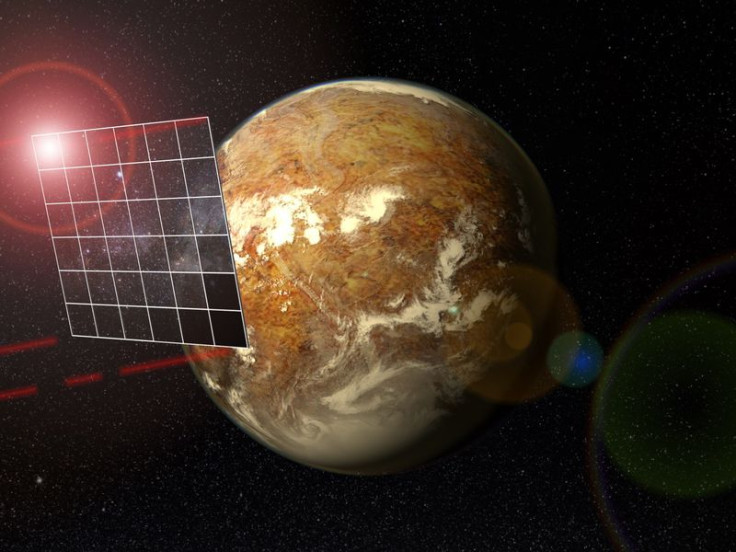Hunt For Alien Life: Researchers Propose Using Gigantic Light Sail-Equipped Probes To Visit Alpha Centauri, Orbit Proxima B

For those looking for signs of life outside our solar system, the hunting ground doesn’t get more fertile than the Alpha Centauri star system. Of the three gravitationally-bound stars in the system located just about 4.3 light-years from Earth, at least one — Proxima Centauri — has a potentially habitable exoplanet locked in orbit around it.
Last April, British cosmologist Stephen Hawking and Russian billionaire investor Yuri Milner announced the launch of the Breakthrough Starshot initiative — a $100 million project that aims to use ground-based laser beamers to accelerate nanocrafts attached to lightsails to up to 20 percent the speed of light. If this is achieved, it would allow the tiny spacecraft to reach the Alpha Centauri system in just 20 years.
However, such a mission would have at least one obvious drawback. If the space probes are travelling at speeds of over 100 million miles per hour, they’d shoot right past Alpha Centauri in less time than it would take to snap a decent photograph of the star system.
The question, then, is: what can be done to slow down the nanocrafts long enough to not only examine the stars Alpha Centauri A and B, but to also venture close to the red dwarf Proxima Centauri and study the Earth-like planet Proxima b?
Two researchers from the Max Planck Institute for Solar System Research in Göttingen, Germany — René Heller and Michael Hippke — have now put forward a proposal. In a study published Wednesday in the Astrophysical Journal letters, they suggest using the radiation and gravity of the Alpha Centauri stars to decelerate the probes.
“The solution is for the probe’s sail to be redeployed upon arrival so that the spacecraft would be optimally decelerated by the incoming radiation from the stars in the Alpha Centauri system,” the Max Planck Institute explained in a statement. “During the approach to Alpha Centauri, the braking force would increase. The stronger the braking force, the more effectively the spacecraft’s speed can be reduced upon arrival. Vice versa, the same physics could be used to accelerate the sail at departure from the solar system, using the sun as a photon cannon.”
The researchers’ proposal is based on computer simulations involving probes weighing less than 100 grams, each fitted with an enormous 1.1 million square feet lightsail (the size of about 14 soccer fields) made of an ultra-light but tough material like graphene — much larger than the ones currently being envisioned by the Starshot initiative. This proposal also allows the probes to be accelerated by the sun while moving away from Earth, removing the need to build a dedicated ground-based laser system.
The catch, however, under Hippke and Heller’s plan, is that the probes can only be accelerated to 4.6 percent the speed of light. As a result, instead of the 20-year timeline Starshot is aiming for, the journey to Alpha Centauri would take about 95 years. And, if the probes are then sent toward Proxima Centauri, it would take another 46 years.
“Our new mission concept could yield a high scientific return, but only the grandchildren of our grandchildren would receive it. Starshot, on the other hand, works on a timescale of decades and could be realized in one generation. So we might have identified a longterm, follow-up concept for Starshot,” Heller said in the statement. “We could soon be entering an era in which humans can leave their own star system to explore exoplanets using fly-by missions.”
© Copyright IBTimes 2024. All rights reserved.





















